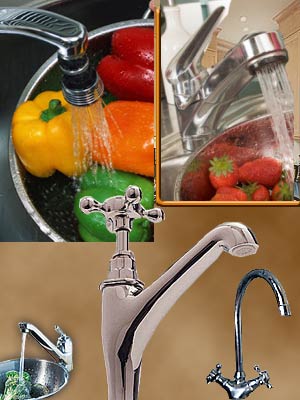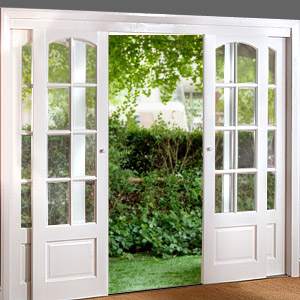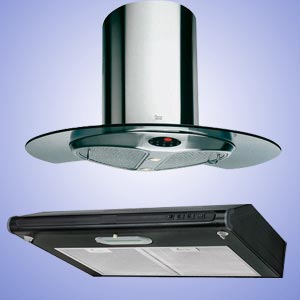Kitchen Faucet

Kitchen faucets are now available in a variety of materials, distinctive styles and designs. You can opt for inexpensive models or go in for high-cost branded units. It's worth the investment as kitchen faucets transform your kitchen area into a classic statement of luxury and convenience. The right kitchen faucet helps in executing kitchen tasks in a synchronized, convenient method. Arm yourself with tips on selecting the right kitchen sink faucet. Read through for detailed information to enable matching your budget with guaranteed performance and stylish look.
Role of Kitchen faucets
Kitchen faucets have an important role to play in the kitchen. Since the kitchen sink faucet is heavily used, it is prudent to go in for the best you can afford. Begin your kitchen faucet selection by assessing your current and future needs.
- Should you use the existing kitchen sink or purchase a new one?
- Check the size of the sink with the faucet connection.
- How many mounting holes are provided in the sink?
- Does the space between holes support ease of operation?
- Do you require a water filtering facility?
- What is the preferred length of spout towards the center of bowl?
- What material is the sink made of?
- Find out applicable warranty period.
Kitchen sink faucet
Brass, polished stainless steel, chrome or copper, the body of the kitchen faucet should be durable, heavy in weight, suitable to kitchen decor, require minimum maintenance and must not corrode, pit or discolor. Brass kitchen faucets are preferred for their resistance to adverse conditions and tough components.
Chrome plated kitchen faucets are most popular as they blend with any decor and are affordable. Look for kitchen faucets with PVD (Physical Vapor Deposition) coating that provides resistance to corrosion. Opt for brushed-nickel or wrought iron or even hammered copper finish to keep with a vintage decor. A kitchen faucet with a forceful spray option is a must for rinsing or cleanup.
Selecting kitchen faucets
Handles: To a large extent, the handle and the spout determine to a large extent the style of the kitchen faucet. Kitchen faucets come in two basic styles, the single-handle faucet and double-handle kitchen faucet.
- Single-handle kitchen faucet is easy to maneuver. With one handle or knob, you can control water temperature and the volume. The other hand is free to tend to other tasks.
- Double-handle kitchen faucet has more design flexibility, offers two spouts one for hot and the other for cold. The spouts and the valves form part of a single base unit and facilitate precise temperature adjustment. With a variety of spout designs (handle, knob or cross handle options), these faucets are preferred for durability and low-maintenance.
Spouts: Kitchen faucet spouts come in three different styles, namely the pullout or pull-down spray, faucet with a side spray and without a side spray.
- Pullout or pull down spray: Do consider the extent of using spray in kitchen. If you would be using spray extensively, opt for pullout spray. Holding the pullout spray with one hand, the other hand is free for cleaning or washing purposes.
- Faucet with side spray: This allows you to hold on to a hose that is mounted to the right or left of the faucet.
- Faucet without side spray: If you do not anticipate using spray in the kitchen, faucet without side spray is a suitable option.
Valves: The valve, which is the heart of faucet, regulates and controls the flow of water through the spout. Kitchen faucets can be grouped into four main types based on the internal part that regulates water flow - the cartridge, compression, ball and disc.
Compression valve faucets: The rubber washers or seals at the base of the stem restrict water flow when the handle is turned on/off. Compression kitchen faucets usually have two handles, one each for hot/cold water and are less expensive. As and when the washers or seals wear out, water starts dripping and valves require immediate replacement.
Ball valve faucets: The ball valve consists of a stainless steel ball that is located inside the body of the faucet. This helps in regulating the flow and temperature of the water into the faucet. A ball valve faucet rarely requires replacement of ball valve.
Cartridge or washerless faucets: There are no washers or seals for the off/on action but only hollow, plastic-and-brass cartridges. These do not wear out fast and are most preferred. Compared to compression valve faucets and ball valve faucets, cartridge or washerless faucets are slightly expensive.
Ceramic valve faucets: The two fire-hardened ceramic discs work as good resistance against line debris, mineral buildups and other possible common valve problems. Being maintenance free, ceramic valve faucets are preferred for ease of use too.
Top of the Page: Kitchen Faucet
Tags:#kitchen faucet #kitchen sink faucet
 Home and Garden
Home and Garden Home Improvement Tips
Wood Furnace
Hardwood Floor
Bamboo Flooring
DIY Damp Proofing
Home Improvement Contractor
Handyman Services
House Painting Tip
Faux Painting
Exterior Wall Cladding
Elastomeric Paint
Waterproofing
Home Decor
Christmas Yard Decorations
Sliding French Door
Home Furnishing Idea
Vinyl Siding
Upgrade House Siding
Driveway Resurfacing
Closet Organizer
Linen Cabinet
Blown Glass Vase
Contemporary Credenza
Fish Tank Aquarium
Thanksgiving Cactus
Home Garden Design
Backyard Playhouse
Dining Room Design
Silk Floral Arrangement
Laundry Hamper
Antique Glassware
Fireplace Mantel
Indoor Fountain
Ceiling Texture
Recycling Facts
Cleaning
 Seasonal Home Maintenance Checklist
Seasonal Home Maintenance Checklist Cleaning Bathroom Tile Grout
Spring Cleaning Tips
Stain Removal
Odor Eliminator
Kitchen Garbage Disposal
How to Declutter
Windows
 French Window
French Window Casement Window
Bay Window
Replace Home Window
Retractable Awning
Curtain Valance
Silk Curtains
Lightings
Wrought iron chandeliers
Hybrid Solar Lighting
Motion Sensor Outdoor Lighting
Lamp Shade
Home Lighting Fixture
Chandelier Lighting
Foyer Lighting
Recessed Lighting Fixtures
Home Security
Burglar Alarm System
Video Surveillance Camera
Web Security Cameras
Security cameras
CCTV Cameras
Driveway Alarm
Home Electronics
 Windows 10 Tips for Power Users
Windows 10 Tips for Power UsersSmart Home Tips
Patio Radiant Heaters
Solar Water Heater Systems
Driveway Gates
Vacuum Cleaner Review
Dehumidifier
Clothes Dryer
Integrated Dishwasher
RFID Technology - RFID Application
Lower Energy Bills
Reduce Carbon Footprint
Electronic Pest Control
Home Appliance Maintenance
 Washing Machine Maintenance
Washing Machine Maintenance Ionizer Air Purifier
Vacuum Cleaner Maintenance
Appliance Maintenance - Refrigerator
Dishwasher Maintenance
Do it yourself Home Improvement
Kitchen Appliances
Budget Kitchen Upgrade
Food Steamer
Waffle Iron
Garment Steamer
Crepe Maker
Kitchen Blender
Meat Grinder
Juicer
Gas Grill
Barbecue Smoker
Kitchen Improvement
 Types of Cutlery
Types of Cutlery New Kitchen Countertops
Kitchen Cabinet
Kitchen Chimney Hoods
Kitchen Pantry
Kitchen Knife
Metal Bread Box
Kitchen Canister
Kitchen Remodeling Idea
Kitchen Furniture
Kitchen Faucet
Kitchen Lighting Idea
Custom Kitchen Island
Ceramic Kitchen Sink
Kitchen Backsplash Tile
Crockery
Barbecue Grilling Tip
Stainless Steel Tableware
Bath
Bathroom Sink Vanity
Shower Enclosures Kits
Shower Massage Panel
Bath Safety for Seniors
Inground Swimming Pool
Swimming Pool Maintenance
Replacing Bathroom Fixtures
Remodel Bathroom
Bath Tub Restoration
Jacuzzi Tub
Bedding
Organic Mattress
Memory Foam Mattress
Water Bed Mattress
Childrens Bunk Beds
Adjustable Bed
Neck Pillow
Luxury Bed linen
Furnitures
 Writing Desk
Writing Desk Bedroom Furniture
Furniture Restoration
Bar Stool
Antique Furniture
Bedside Table Design
Picnic Table
Storage Ottoman
Kitchen Buffet Furniture
Contemporary Furniture Guide
Rustic Furniture
Space Saving Furniture
Wood Furniture Care
Top of the Page: Kitchen Faucet
Popularity Index: 100,738

